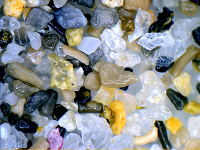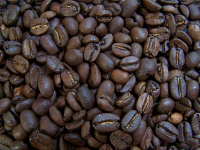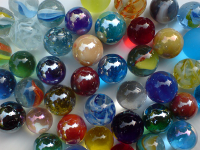This is an old revision of the document!
Research
For most of my scientific life I worked on Granular Fluids. While real granular particles like sand, gravel, pills, cereals or coffee beans come in all sorts of shapes and are usually quite irregular, as a theoretician I exclusively use spherical (or disk shaped) particles. I prefer to solve problems with pen and paper (and the occasional help of Gradshteyn and Maple) but I also burn a lot of CPU time running and analyzing event driven molecular dynamics simulations.
The Granular Glass Transition
Experiments by Durian et al.1) indicated that densely packed fluidized granular systems may be in a glassy state. I managed to generalize the so called Mode Coupling Theory2) of the glass transition (that had been developed for equilibrium fluids) to the far from equilibrium stationary state of a driven granular fluid. The result is: It works, it makes nontrivial predictions and there is a granular glass transition
Rough Granular Particles
For simplicity, granular particles are most often assumed to be smooth. I.e., the slide past each other with zero friction. In reality this is certainly not the case. Frictional particles have a number of surprising features. E.g., there is no equipartition between rotational and translational degrees of freedom3) and with an extremely long calculation, we could show that the axis of rotation and the direction of flight of a rough particle are correlated.
- see Rough Spheres
Granular Mixtures
In contrast to, say, mixtures of different gases, mixtures of different granular particles do not evolve towards a state of energy equipartition. This surprising result can be explained as a competition between a drive to equilibrate the energy and different cooling rates. For highly polydisperse mixtures we analyzed the distribution of partial temperatures.



